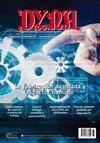PARAMETRIC MODELING OF BIO-INSPIRED LUMINAIRES FOR ADDITIVE MANUFACTURING TECHNOLOGIES
IF 0.7
4区 工程技术
Q3 ENGINEERING, MULTIDISCIPLINARY
引用次数: 0
Abstract
The development of 3D modeling tools has allowed the construction of geometries that were unattainable computationally until a few decades ago. Specifically, parametric design and modeling is gaining significant importance in the conceptualization of new designs and products. This communication shows some of the resulting prototypes, designed and manufactured by INNANOMAT research group (TEP 946) of Cadiz University. A product design methodology for Additive Manufacturing (AM) and functional luminaire models proposed in the scope of two projects: ADICORK and 3DBLEND. In these projects, bio-inspired texture designs were explored in natural elements and environments of the province of Cádiz, in order to highlight this region and the value of its ecosystem. In both projects, sustainable polymeric blends were developed that served as base material for the manufacture of part of the prototypes shown in this communication. For these designs, parametric design programs such as Grasshopper, a Rhinoceros plugin, were used to obtain complex models that achieve a unique and differentiating aesthetic. The result of the modeled texturing is combined with surfaces in Rhinoceros. Once the textured model is defined, it is detailed and finished in modeling programs where dimensional control is greater, and the design is adjusted to the specific AM technology chosen. In this case two were used, Fused Filament Fabrication (FFF) and Fused Granular Fabrication (FGF). Keywords: Parametric design; Fused Granular Fabrication; Additive Manufacturing; product design; Biomimicry用于增材制造技术的生物启发式灯具的参数建模
随着三维建模工具的发展,人们可以构建出几十年前还无法通过计算实现的几何形状。具体而言,参数化设计和建模在新设计和产品的概念化过程中正变得越来越重要。这篇通讯展示了加的斯大学 INNANOMAT 研究小组(TEP 946)设计和制造的一些原型。在两个项目范围内提出了用于快速成型制造(AM)的产品设计方法和功能性灯具模型:ADICORK和3DBLEND。在这些项目中,在加的斯省的自然元素和环境中探索了生物启发的纹理设计,以突出该地区及其生态系统的价值。在这两个项目中,都开发了可持续的聚合物混合物,作为制造本交流中展示的部分原型的基础材料。在这些设计中,使用了参数化设计程序,如 Grasshopper(Rhinoceros 的一个插件),以获得复杂的模型,实现独特和与众不同的美感。模型纹理的结果与 Rhinoceros 中的曲面相结合。纹理模型确定后,在建模程序中对其进行细化和加工,在建模程序中尺寸控制更强,设计也会根据所选的特定 AM 技术进行调整。在本案例中,使用了两种技术:熔融长丝制造(FFF)和熔融颗粒制造(FGF)。关键词参数化设计;熔融粒状制造;增材制造;产品设计;仿生学
本文章由计算机程序翻译,如有差异,请以英文原文为准。
求助全文
约1分钟内获得全文
求助全文
来源期刊

Dyna
工程技术-工程:综合
CiteScore
1.00
自引率
10.00%
发文量
131
审稿时长
6-12 weeks
期刊介绍:
Founded in 1926, DYNA is one of the journal of general engineering most influential and prestigious in the world, as it recognizes Clarivate Analytics.
Included in Science Citation Index Expanded, its impact factor is published every year in Journal Citations Reports (JCR).
It is the Official Body for Science and Technology of the Spanish Federation of Regional Associations of Engineers (FAIIE).
Scientific journal agreed with AEIM (Spanish Association of Mechanical Engineering)
In character Scientific-technical, it is the most appropriate way for communication between Multidisciplinary Engineers and for expressing their ideas and experience.
DYNA publishes 6 issues per year: January, March, May, July, September and November.
 求助内容:
求助内容: 应助结果提醒方式:
应助结果提醒方式:


